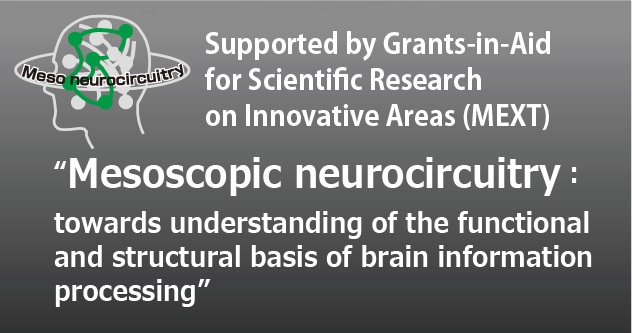Professor NOSE Akinao
We are interested in the mechanisms of how the neural circuits develop and function to generate specific behavior, by using the nervous system of the fruit fly Drosophila as a model. In this organism, the relative simplicity and highly sophisticated genetic techniques allow one to identify and manipulate specific neurons. We focus on the larval peristalsis (waves of muscular contraction that propagate along the body) and try to understand how the motor outputs are generated by the neural circuits. For this, we use a variety of genetic and biophysical techniques. For example, we use calcium imaging to record the activity of specific population of neurons. By using a recently developed technique, called optogenetics, we manipulate the activity of specific neurons with light at high resolution. By recording and manipulating the spatio-temporal pattern of neural activity, we aim to understand the operational principle of the neural circuits.
Collaborative Researcher KOHSAKA Hiroshi
Decoding physical basis for motor circuits.
The world is full of moving objects. Among them, animals are a special group that have survived and evolved on the earth. The most conspicuous property of animals is that they possess networks of neurons (“neural circuits”) in the body. Although these networks are just a cluster of electrically-charged cells, neural circuits have an amazing ability of conducting multiple tasks including detecting the surrounding physical world by sensory networks, changing neural circuit states by internal network dynamics, and generating adequate motor outputs by muscle contraction. How neural circuits generate coordinated and coherent activity patterns is a fundamental question in neuroscience. Recent technical advances in genetics, optical control, and image analyses enable dissecting how neural circuits work in cellular level. In our lab, in collaboration with the Nose Lab, we study physical basis in locomotion control by applying state-of-the-art techniques to fruit fly larvae. Because neuroscience is interdisciplinary, we focus on multiple axes in multiple scales:
1) Spatial scale axis: DNA, proteins (nanometer); synapses, cells, circuits (micrometer), whole animal (millimeter), and animal populations
2) Time scale axis: neuronal activity (millisecond), circuit dynamics (second), motor control (minute), and evolution/speciation
3) Concrete-Abstract axis: from identification of genes and interneurons to construction of neural circuit models.
Based on these multiple perspectives, we are currently searching for key interneurons in the motor circuits and examining the mechanical dynamics of their motor outputs. The goal of our study is elucidating the physical basis for motor circuits by constant efforts and openminded thinking.
The world is full of moving objects. Among them, animals are a special group that have survived and evolved on the earth. The most conspicuous property of animals is that they possess networks of neurons (“neural circuits”) in the body. Although these networks are just a cluster of electrically-charged cells, neural circuits have an amazing ability of conducting multiple tasks including detecting the surrounding physical world by sensory networks, changing neural circuit states by internal network dynamics, and generating adequate motor outputs by muscle contraction. How neural circuits generate coordinated and coherent activity patterns is a fundamental question in neuroscience. Recent technical advances in genetics, optical control, and image analyses enable dissecting how neural circuits work in cellular level. In our lab, in collaboration with the Nose Lab, we study physical basis in locomotion control by applying state-of-the-art techniques to fruit fly larvae. Because neuroscience is interdisciplinary, we focus on multiple axes in multiple scales:
1) Spatial scale axis: DNA, proteins (nanometer); synapses, cells, circuits (micrometer), whole animal (millimeter), and animal populations
2) Time scale axis: neuronal activity (millisecond), circuit dynamics (second), motor control (minute), and evolution/speciation
3) Concrete-Abstract axis: from identification of genes and interneurons to construction of neural circuit models.
Based on these multiple perspectives, we are currently searching for key interneurons in the motor circuits and examining the mechanical dynamics of their motor outputs. The goal of our study is elucidating the physical basis for motor circuits by constant efforts and openminded thinking.



